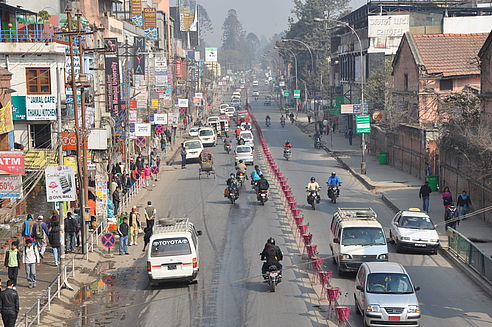Background and State-of-the-Art
Air quality (AQ) is one of the grand challenges that the humanity is facing now and in the coming decades. Recent estimate by the World Health Organization accounted 7 million premature deaths globally to poor air quality (WHO, 2014). Air-quality-related ailments are ranking fourth in the list of most common causes of premature death, with the estimated risk almost as high as for smoking and over twice as high compared to alcohol and drug use. Globally, 87 percent of population lives in areas where the WHO recommendations for fine particle concentrations are exceeded. In Europe, 90 % of the urban population is exposed to excess concentrations of gas and particulate pollution (EEA, 2015), leading to negative health effects and even premature deaths. In Finland air pollution is estimated to cause about 1 600 premature deaths (Hänninen et al. 2016) and as many as 40 000 respiratory infections per year. This is a consequence of the fact that there is no safe limit for the air pollution exposure. The welfare losses has been rising rapidly, with current estimates putting them in around 3000 billion euros a year (World Bank, 2016).
Air quality problems are closely linked with urbanization. There are currently about 550 cities in the world with population in excess of one million. Roughly 2 billion people live in these cities. Typically, industrialized countries invest about 0.5 to 1 € per capita to air-quality-monitoring infrastructures (World Bank, 2016). The current measurement networks are generally insufficient to quantify air quality and exposure in a regional scale or smaller. Further, the AQ information provided to the citizens is generic in nature and serves decision making aimed at limiting the daily exposure only in a very limited fashion. For example, the information is not sufficiently localized and usually consider only the present conditions. The air quality forecast models are, however, reaching the maturity where they could provide highly localized forecasts of air quality exposure. With sufficiently dense measurement networks and emission modeling, much better services could be provided. One important research question to solve is how to build the measurement networks optimally and cost-effectively to serve this purpose.
Air quality is affected by both gas-phase components, such as ozone (O3), nitrogen oxides (NOx), and aerosol particles (mass and number concentration). Particularly in urban environments, spatial and temporal variations in the concentrations are large, leading to high variability in the exposure within the population. Due to this heterogeneity, the observations need to be performed in a network of AQ stations. Furthermore, the measurements and modeling of all of these compounds together are required for a comprehensive understanding of the current air quality situation.
In a general case, air quality can be improved e.g. by constraining anthropogenic gas and particle emissions. However, due to interconnections and atmospheric processing, sometimes the reductions can lead to enhanced pollution. As an example, reduction in NOx emissions can lead to increased ozone concentrations that can produce more secondary aerosol mass (Ding et al. 2013). A network of comprehensive observations with a platform connecting the observations with modeled features are required for optimizing the benefits of emission control in urban environments.
Finland is the world leader in air quality and atmospheric research, and understanding on the atmospheric processes. This expertise is present in the consortium, which combines the Finnish technical, commercial, administrative and scientific expertise in environmental monitoring in terms of urban meteorology and air quality. The on-going activities by FMI, UHEL and HSY in comprehensive AQ observations and the HSY air quality network in Helsinki metropolitan area together with the integrating AQ instruments and modeling by the consortium provide an excellent foundation for the Helsinki metropolitan Air Quality Testbed (HAQT). The complementary utilization of novel instrumentation, comprehensive AQ observations and state-of-the-art modeling tools will enable optimized pollution control, air quality forecasting and development of the next generation air quality products for the global AQ market.
The HAQT project builds on the TEKES-funded CITYZER Open Business Ecosystem, with which HAQT has a strong synergy. CITYZER developed an open digital business ecosystem of services and products for weather and air quality data, based on the modular and scalable CITYZER platform. As part of the CITYZER project, there were demo of the CITYZER platform (CityzerDEMO) within the Helsinki metropolitan area in 2018. The platform offered some mobile and online demo services based on HSY’s air quality measurements, FMI’s radar-based precipitation measurements, and modeled forecasts of precipitation and air quality.
HAQT were build on the CITYZER digital platform, where the measurement, modeling and application layers were readily integrated with standardized interfaces. This allowed HAQT to concentrate its resources on extending the air quality measurement network, investigation of its optimization in the heterogeneous urban environment and the resulting impacts on the accuracy of AQ forecasts, as well as on generating ideas for useful and beneficial applications and services for different user groups. An extended version of the CITYZER platform were deployed as the HAQT Pilot to serve the citizens, businesses and other decision makers of the Helsinki metropolitan area, and to showcase the Finnish knowhow. The HAQT team included almost all CITYZER project partners, ensuring close collaboration and smart use of resources between the projects.
